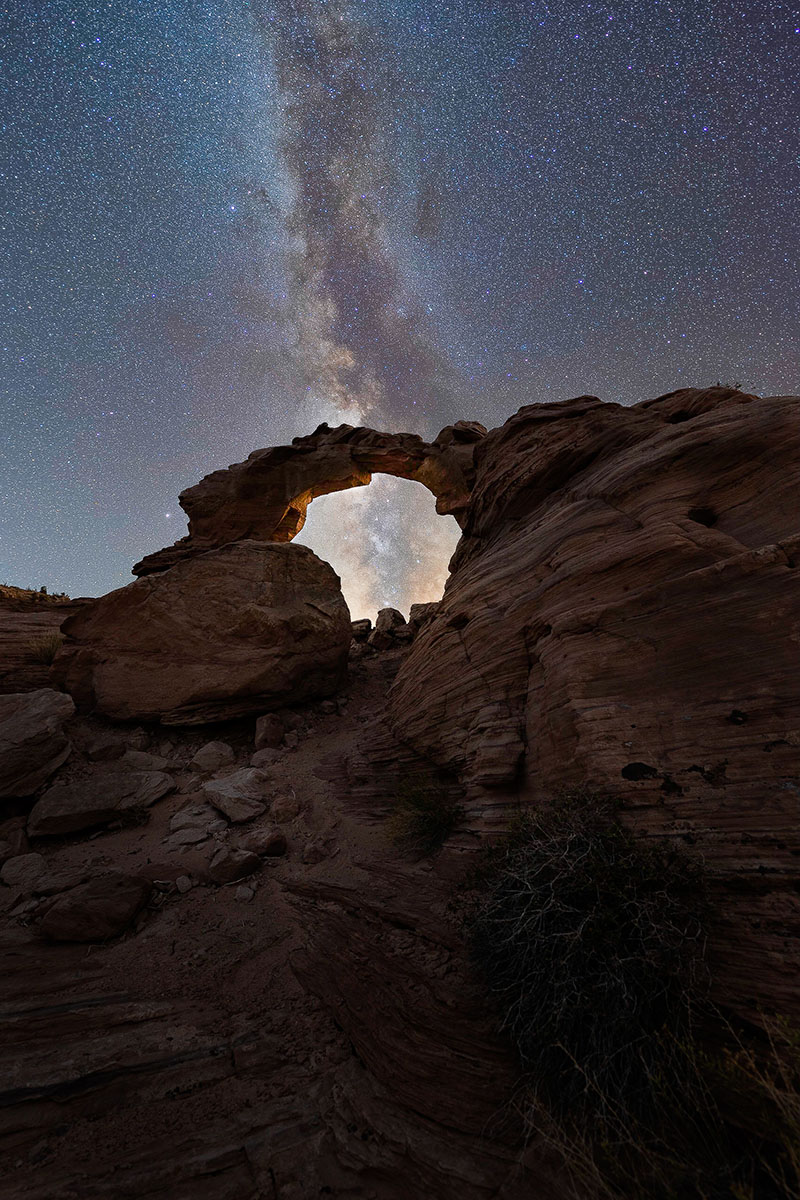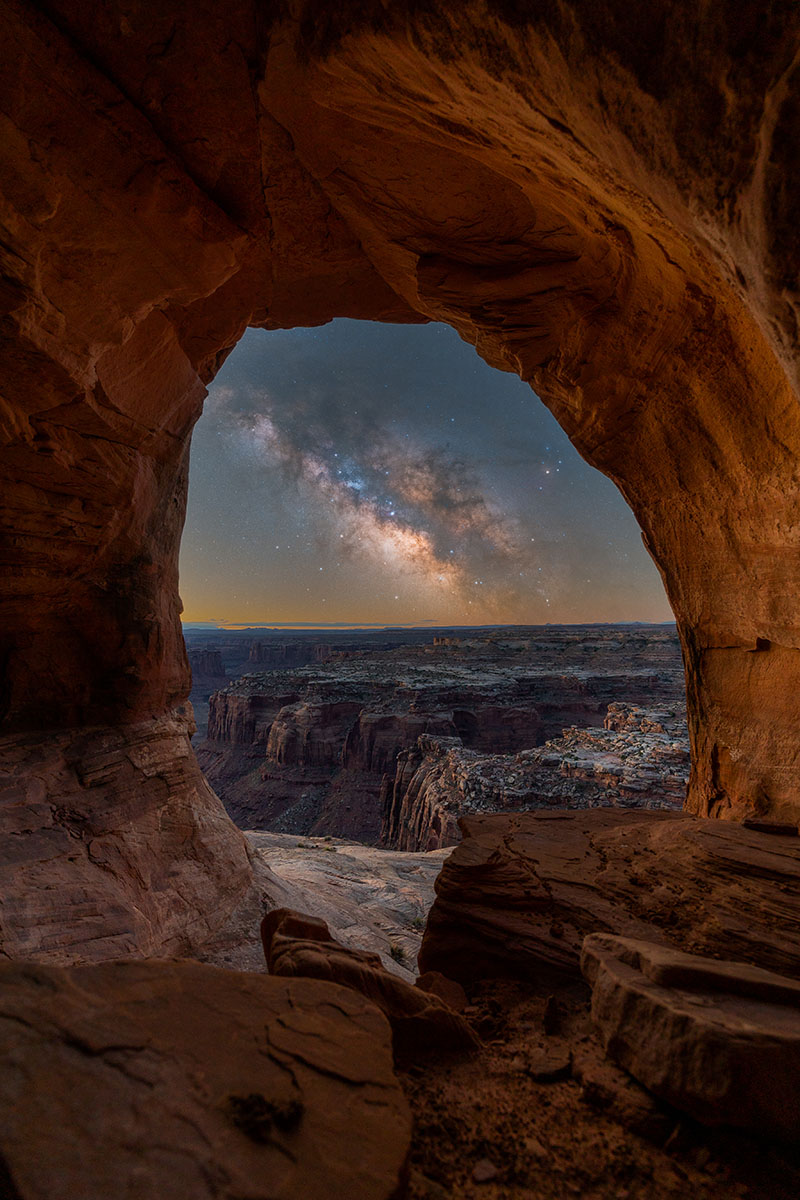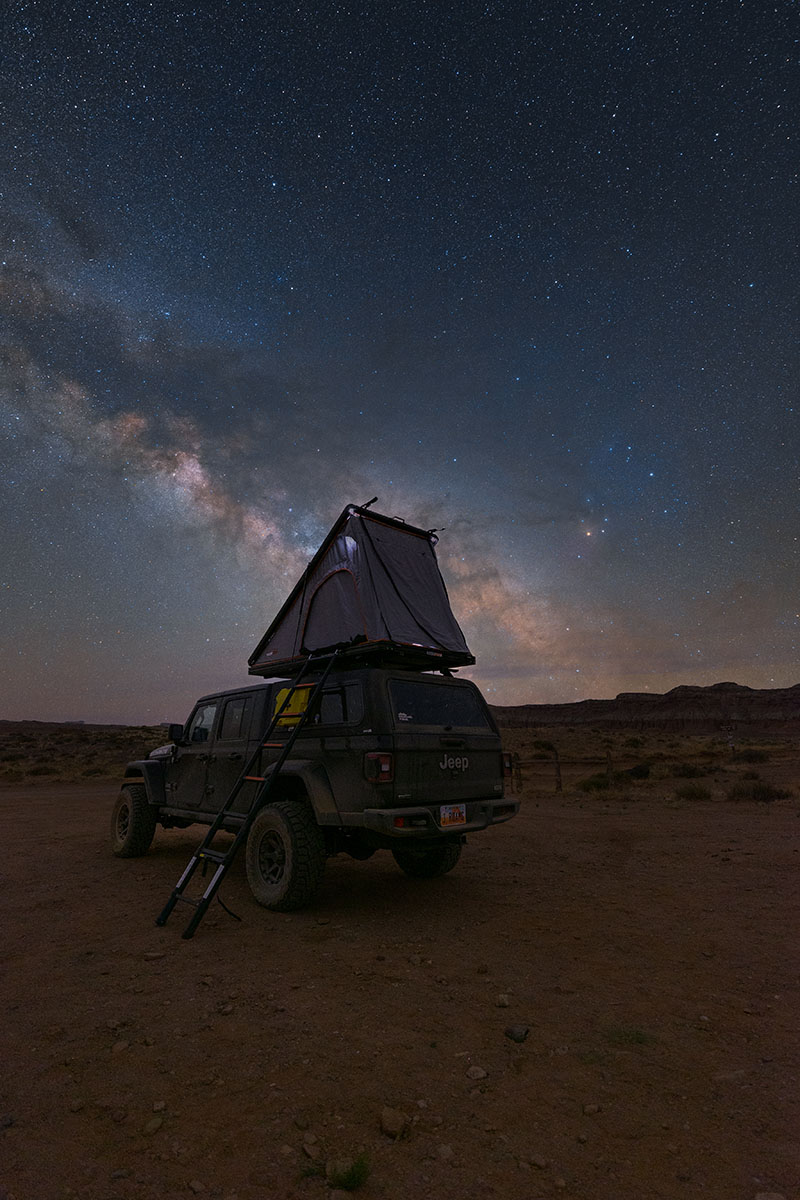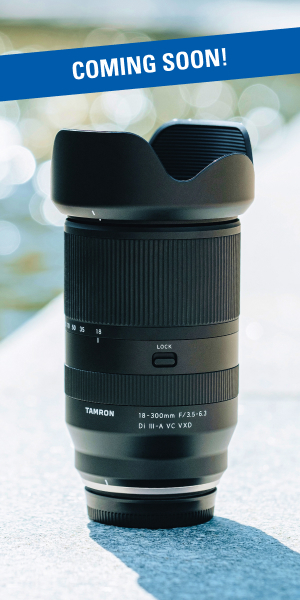A astrofotografia pode ser um desafio, mas com as técnicas certas, você pode capturar imagens impressionantes do céu noturno. Nesta postagem, abordamos três dicas profissionais para fotografar a Via Láctea, desde a escolha do equipamento certo até o domínio da composição. Se você está apenas começando ou quer melhorar suas fotos, essas dicas de astrofotografia o ajudarão a tirar o máximo proveito de suas sessões e a melhorar suas imagens do céu noturno.
Imagens e dicas de Jonny Hill
O que você aprenderá neste artigo:
- Como escolher a lente grande angular certa para tirar fotos impressionantes da Via Láctea
- Por que as fases da lua são importantes e como planejar sua sessão de fotos de acordo com elas
- A importância dos elementos de primeiro plano na criação de composições dinâmicas
- Dicas profissionais para capturar céus noturnos de tirar o fôlego
DICA 1: USE UMA LENTE GRANDE ANGULAR

Use uma lente ultra grande angular como a Tamron 17-28 mm F/2.8 Di III RXD (modelo A046) ou 11-20 mm F/2.8 Di III-A RXD (modelo B060) ou o Tamron 20mm F/2.8 Di III OSD (modelo F050) prime. Fotografar com 20 mm ou mais ajudará você a capturar o máximo possível do núcleo da Via Láctea, e a distorção de uma lente grande angular ajuda a criar imagens dramáticas.
DICA 2: PLANEJE DE ACORDO COM AS FASES DA LUA

A lua é uma das fontes de luz natural mais brilhantes no céu noturno e, embora seja linda, pode ser um grande obstáculo quando se está tentando fotografar estrelas ou a Via Láctea. Até mesmo uma lua meio cheia pode encobrir detalhes celestiais fracos e reduzir o contraste em suas imagens. Para capturar fotos limpas e de alto contraste do céu noturno, procure fotografar durante a fase de lua nova ou dentro de alguns dias de cada lado dela, quando o céu estiver mais escuro.
Use aplicativos de astronomia, como PhotoPills, Stellarium ou Sky Guide, para acompanhar as fases da lua, os horários do nascer e do pôr da lua e a visibilidade da Via Láctea. Planejar sua foto para uma noite sem lua aumentará drasticamente suas chances de obter fotos nítidas e detalhadas, cheias de estrelas e textura galáctica.
DICA 3: ADICIONE UM ELEMENTO DE PRIMEIRO PLANO

Um céu estrelado é deslumbrante por si só, mas a incorporação de um elemento interessante em primeiro plano pode transformar sua foto de uma simples foto noturna em uma história atraente. Os temas de primeiro plano criam profundidade, escala e contexto, atraindo o espectador para a imagem e proporcionando um senso de lugar.
Seu primeiro plano pode ser tão simples quanto uma árvore em silhueta, uma flor silvestre ou um afloramento rochoso. Para obter resultados mais dinâmicos, tente usar superfícies reflexivas, como um lago ou poça, para espelhar as estrelas, ou inclua estruturas como uma barraca, cabana ou até mesmo uma pessoa com uma lanterna para adicionar humor e narrativa.
Ao procurar locais, procure formas e linhas fortes que complementem o movimento da Via Láctea no quadro. Um primeiro plano bem escolhido não apenas aumenta o interesse visual, mas também ajuda a ancorar o drama cósmico do céu noturno no mundo que conhecemos.
Capture a noite como um profissional
A astrofotografia tem tanto a ver com preparação quanto com criatividade. Usando uma lente grande angular, planejando as fases da lua e incorporando elementos de primeiro plano atraentes, você pode melhorar drasticamente a qualidade e o impacto das suas imagens do céu noturno. Com essas dicas profissionais de astrofotografia de Jonny Hill, você estará no caminho certo para capturar a Via Láctea em todo o seu brilho. Saia sob as estrelas, faça experiências com seu equipamento e deixe o céu noturno inspirar sua próxima obra-prima.
Saiba mais sobre grande angular lentes para astrofotografia em um revendedor autorizado Tamron em sua área ou visite o site Loja TAMRON hoje.
Mais dicas de fotografia | Assistir a vídeos | Saiba mais sobre as lentes Tamron | Galeria de fotos
